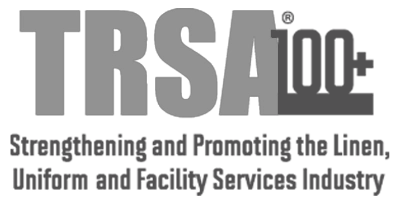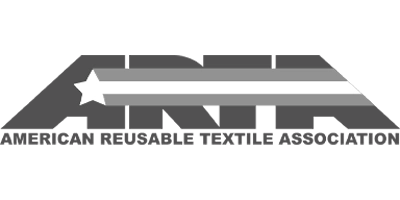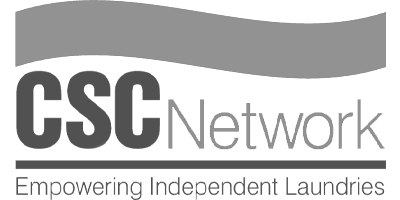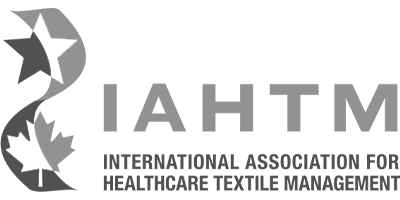Linen management is a behind the scenes operation with a direct impact on guest satisfaction and a hotel’s bottom line. In a recent webinar, our own Sarah Sinclair shared invaluable insights on how hotels can reduce costs, minimize linen loss, and embrace sustainability through smarter linen management.
“Linen isn’t just an operational necessity—it’s a vital component of the guest experience. Clean, fresh linens signal quality and comfort.”
— Sarah Sinclair, Chief Customer Officer
This article highlights the key takeaways and actionable strategies that hospitality leaders can implement to transform their linen programs.
Why Linen Management Matters
Properly managed linens do more than just meet basic operational needs — they directly influence how guests perceive your property. Quality bedding and towels create positive impressions, while shortages or poor-quality items can trigger complaints and damaging online reviews. When hotels neglect strategic linen management, they typically face several consequences:
- Increased Costs: Unchecked linen loss and excessive replacements add unnecessary expenses
- Guest Dissatisfaction: Delayed linen turnaround times can disrupt housekeeping and impact guest comfort
- Operational Inefficiencies: Poor communication with laundry vendors and lack of inventory oversight cause bottlenecks
Common Challenges in Hotel Linen Management
Despite its importance, linen management is often plagued by challenges that significantly impact a hotel’s financial and operational success:
1. Linen Loss
Hotels lose an estimated 20-30% of their linen inventory annually at a cost of more than $50,000 due to theft, misplacement, and wear and tear. Without proper tracking systems, it’s nearly impossible to identify where and why items are disappearing.
2. Shortages and Overstocks
The “Goldilocks effect” is difficult to achieve — having exactly the right amount of inventory on hand.
“The ultimate goal of linen management is what I like to call the Goldilocks effect. You don’t have too little, you never have too much, but your on-hand levels are just right.” — Sarah Sinclair
Shortages can lead to what Sarah describes as a “horror movie scenario” where guests arrive to rooms without adequate linens:
“We ran a campaign for International Linen & Uniform Service Day a few years ago… like a scary movie poster, and that poster depicted a guest with no bed sheets, no towels, like it was a horror movie. And that’s because we know that’s the experience that comes forward should there not be the right amount of linens present in a room when a guest comes to stay with you.”
Conversely, overstocking ties up capital and storage space unnecessarily.
3. Inefficient Laundry Processes
Slow turnaround times and poor coordination with laundry vendors (whether in-house or outsourced) lead to operational disruptions that affect the entire guest experience.
The Benefits of Efficient Linen Management
A well-managed linen program brings a multitude of benefits that extend beyond cost savings:
✅ Higher Guest Satisfaction: Consistent quality and availability enhance the guest experience.
✅ Operational Efficiency: Standardized procedures and real-time inventory tracking reduce errors and delays.
✅ Cost Control: Minimizing unnecessary replacements and loss helps maintain a healthy bottom line.
✅ Sustainability Gains: Extending textile lifespan and reducing water, detergent, and energy use contribute to eco-friendly operations.
Whether you manage one hotel or a portfolio of properties, LinenHelper makes it easier to stay organized, stocked, and service-ready.
Key Metrics to Monitor
Implement Smart Inventory Tracking
Manual tracking with clipboards and spreadsheets is prone to errors and time-consuming. Consider leveraging technology solutions such as:
- RFID chips or barcodes for individual item tracking
- Digital platforms for real-time inventory updates
- Automated low-stock alerts to prevent shortages
Standardize Linen Handling Protocols
Develop clear standard operating procedures (SOPs) for linen handling, storage, and distribution. Regular training for staff ensures consistency, even with high turnover rates in the hospitality industry.
Collaborate with Laundry Providers
Whether you use an in-house laundry operation or outsource to a vendor, establish strong partnerships with clear expectations:
- Set quality standards and accountability measures
- Develop consistent communication channels
- Create protocols for addressing shortages or quality issues
Conduct Regular Audits
Daily counts and trend analysis help spot inefficiencies and address potential loss patterns before they escalate. Consistency in auditing is crucial—establish a regular schedule and stick to it.
Strategies to Minimize Linen Loss
With linen management having a big financial impact on the bottom line, Sarah explained how hotels can implement targeted strategies to help mitigate loss:
Set Clear Policies
Educate both staff and guests about linen care and accountability:
- Implement guest-facing programs encouraging towel reuse
- Provide makeup towels to prevent staining on regular linens
- Create clear internal protocols for handling damaged items
“A great example of that… is a towel usage program. If you are willing not to have your room serviced or cleaned for a day… you’re helping our green initiative. Whatever education was provided to me as a guest, it was encouraging me that I might not need an entire changeover of my room every night.”
Track Usage by Department
Differentiate between departments like housekeeping, spa, and food service to identify usage trends and pinpoint areas with higher loss rates.
Use RFID or Branded Linens
Reduce theft and simplify tracking with branded or tagged linens. RFID technology allows for bulk scanning—hundreds of items can be tracked in seconds as they enter or leave the facility.
“If you’re not familiar with RFID scanning, there are bulk scanners that could scan hundreds of pounds of laundry in the same few seconds. So you know when they’ve entered the facility, you’re able to track if they leave the facility… you can have specific tracking information on that item—how many times has it left the facility, how many times has it been washed or processed, how many times has it been stored on the same floor,” shares Sarah.
Leveraging Technology for Linen Management
Digital solutions like LinenHelper can significantly improve efficiency through:
- Mobile Applications: Staff can update linen counts in real time using mobile apps
- Role-Based Tracking: Assign permissions to relevant departments for better accountability
- Automated Reporting: Gain insights with automatically generated usage reports and alerts
The ideal technology solution allows for:
- Real-time inventory visibility across facilities
- User-friendly interfaces for quick adoption
- Transparency across departments and management levels
- Data-driven decision making for purchasing and par levels
Application to Vacation Rentals
Efficient linen management isn’t just for hotels — it’s equally critical for vacation rentals and property management companies. The same principles apply:
- Track inventory across multiple properties
- Forecast linen demand using occupancy data
- Establish consistent quality standards
- Coordinate with cleaning services for proper handling
Choosing the Right Linen Management Solution
When selecting a linen management system, look for:
1. Simplicity: Easy-to-use interfaces that don’t create additional work for staff
“It can’t be overly complicated for people who are trying to work efficiently and quickly on the day-to-day. That’s what we’re trying to do in a hotel, right? We have housekeeping staff, they need to get rooms turned over, they need what they need when they need it, and they need to make sure they’re not spending too much time on tedious tasks,” says Sarah.
2. Training Resources: Comprehensive support materials and onboarding assistance
3. Industry Experience: Vendors with hospitality-specific expertise
4. Implementation Timeline: Many solutions can be implemented in just a few days
Next Steps for Implementation
- Conduct an internal audit of your current linen processes
- Identify your biggest pain points (loss, shortages, or inefficient processes)
- Research technology solutions like RFID tracking or inventory management platforms
- Consider outsourcing linen rental services if currently managing in-house
- Train staff on new procedures and technologies
By addressing linen management strategically, hotels can significantly reduce costs, improve the guest experience, and contribute to sustainability goals — turning what’s often seen as a mundane operational challenge into a competitive advantage.
“Let’s save that 50 grand, let’s save more than that,” says Sarah. “And you can certainly do it by leveraging technology, not really having to worry about the double entry of an item from a clipboard or coming back at the end of a long day and trying to make sure all the counts were put in throughout the day manually and that everything is correct.”
Watch the full webinar:
Enhancing Guest Experiences: Efficient Linen Management for Hotels
Want to reduce costs and optimize your linen operations? Explore linen management solutions today for expert guidance on implementing these strategies in your property.













